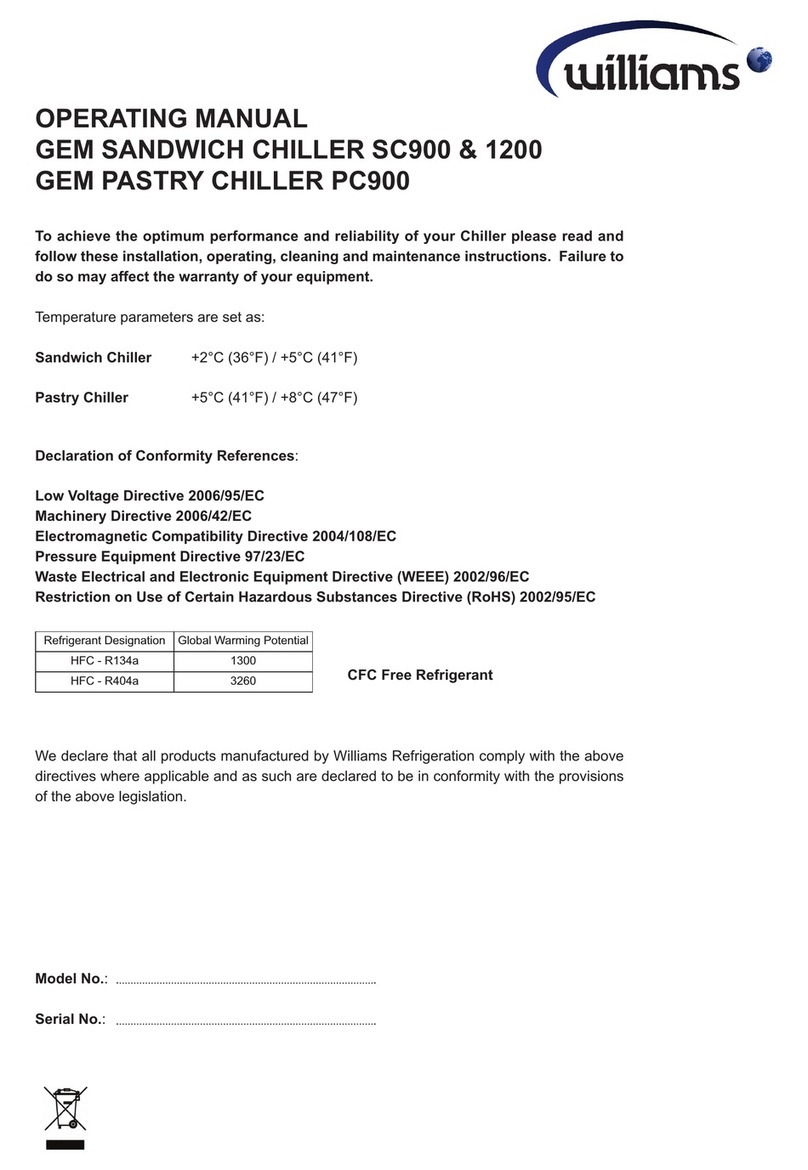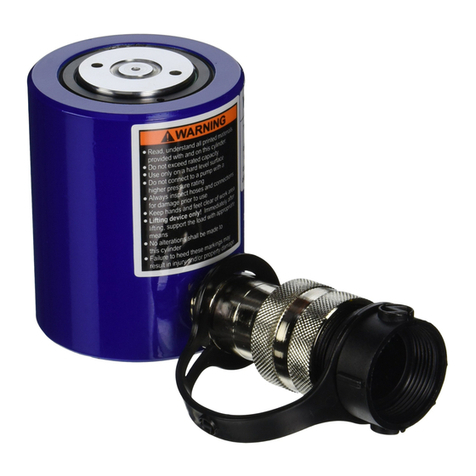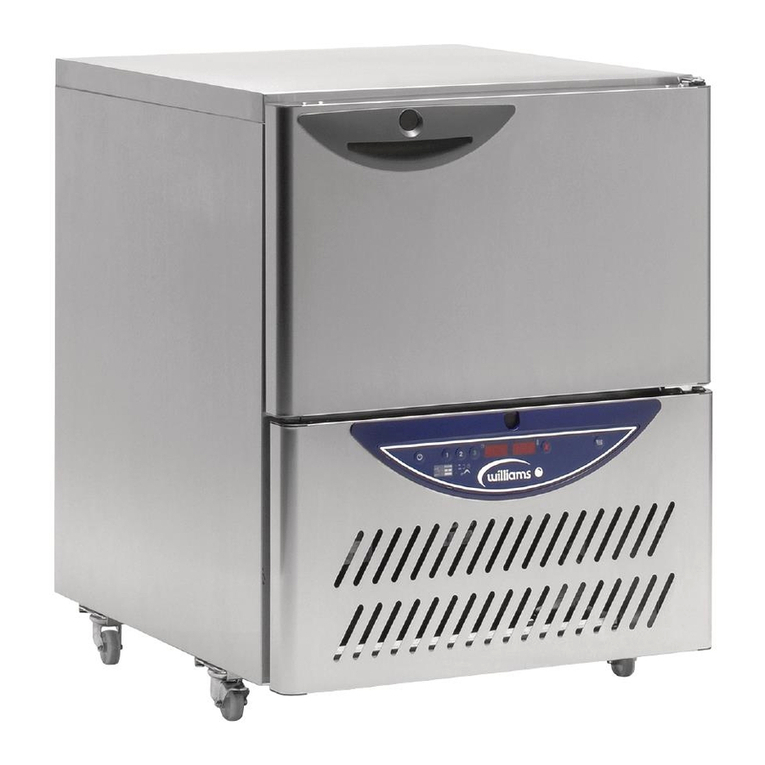
4
INSTALLATION
REMOVAL OF REDUNDANT APPLIANCES
Refrigeration appliances contain refrigerant and
gases in their insulation and must be disposed of
professionally by a licensed waste management
contractor.
Please ensure that old or redundant refrigeration
appliances are disposed of safely and legally. It is
recommended that doors are removed prior to
disposal in order to ensure safety.
UNPACKING
The Roll-in Blast Chillers/Chiller Freezers and
Freezers are supplied modular form on pallets and
require assembly on site. Please see additional
manual on assembly
Remove all external and interior packing and
accessories. Ensure all such material is disposed
of safely.
Check that no damage has occurred to the
appliance, the tubing of the refrigeration system,
power cable and plug top during transit. If damage
has occurred do not use the appliance.
The appliance should be installed in a well ventilated
room on a at and level oor.
PROTECTIVE COATING
The polished stainless steel surfaces are protected
during manufacturing and transport by an adhesive
plastic coating.
This should be removed prior to placing your
appliance into use. Carefully peel away to reveal
the polished stainless steel surface. Care should be
taken to ensure that no adhesive residue remains
on the surface. Any stubborn or tough adhesive
marks can be removed by following the advice on
Page 11.
VENTILATION
Refrigerators generate a considerable amount of
heat and, if operated in a small unventilated room
will quickly cause the room temperature to become
excessive. This could cause the motor to overheat
and possibly damage the compressor. At the very
least, such an installation will cause the unit to use
an excessive amount of electricity.
In addition to ventilation in a room, please ensure
that cabinets with top-mounted systems (WBC/
WBCF50, WBC70 & WTBC70) have 500mm
clearance between the cabinet top and the ceiling
for engineer access and ventilation. For all other
cabinets, please ensure a minimum clearance
of 50mm is provided around the unit to ensure
ecient and eective performance.
Roof mounted pod storage refrigeration systems
require adequate ventilation as well.
LEVELLING (CASTORS/FEET)
The Reach-in Blast Chillers / Chiller Freezers should
stand level to ensure the correct operation of self-
closing doors and proper drainage of condensate
from the evaporator.
Models tted with castors are non-adjustable.
Therefore a level platform / oor should be
provided where the appliance is to be located.
Where swivel and brake castors are tted and it
has been positioned, please ensure its brakes have
been activated by pressing the metal bar down.
Remember to release the brakes before trying to
move it.
On models tted with legs, levelling may be achieved
by adjusting the bottom section. For marine
specication models with anged feet for deck and
bulkhead xing, installation should be carried out by
a specialist marine company.
MAINS CONNECTION
Commercial kitchens and foodservice areas
are environments where electrical appliances
may be located close to liquids, or operate
in and around damp conditions or where
restricted movement for installation and
service is evident.
Great care must be exercised at all times when
installing, operating or servicing this appliance.
For appliances tted with a moulded plug, for safety
ensure that the mains power cable is extended free
from the refrigeration system and cabinet, to avoid
entanglement. If a plug or mains cable requires
replacement, contact the Williams Spares Oce on
+44 (0)1553 817017.
The installation of a xed appliance and periodic
inspection should only be undertaken by a qualied,
skilled and competent electrician; and connected
to the correct power supply suitable for the load as
stipulated by the appliance data label.
Do not block vents by stacking boxes on top
or in front of the unit as this could aect
performance and give rise to safety risk.
INSTALLATION
































